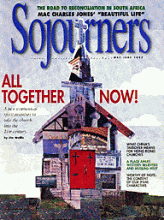The Christian church of the 21st century will look quite different than it does today. Yes, there will be a church, despite the dire predictions of many who keep pointing to declining church rolls and influence. There may even be more churches and more people going to them than we see today. But the churches will be different, and the relationships among them will be one of the most different things of all.
The best way to describe how the churches have been operating is to liken them to vertical binstop-down structures where ideas and leadership are dropped into the system from the top, in the hope that they will reach down to the grassroots level. But the vertical style of organization and leadership that has characterized most churches is already changing. In the future, horizontal patterns of relationship between congregations will be the normative style, and those ecclesial interconnections will cross the lines that have divided us for a century.
These new connections are profoundly local and focused on cooperation around specific and practical issues facing communities and neighborhoods. Three factors are producing the new horizontal configuration: the changing shape of social policy in America, a cultural crisis of values, and a deep spiritual hunger that transcends old ideological categories. Together, these forces call forth a new "ecumenical" reality.
WHEN AMERICAN PROTESTANTISM split into two camps in the early 1900s, the schism went deep and remained a permanent divide throughout the rest of the 20th century. The "fundamentalists" took the conservative road of personal piety and correct doctrine, while the "modernists" chose the liberal path of the social gospel. Protestants questioned whether Catholics were really Christians, and most all white churches wished to keep segregated from their black brothers and sisters.
Read the Full Article

